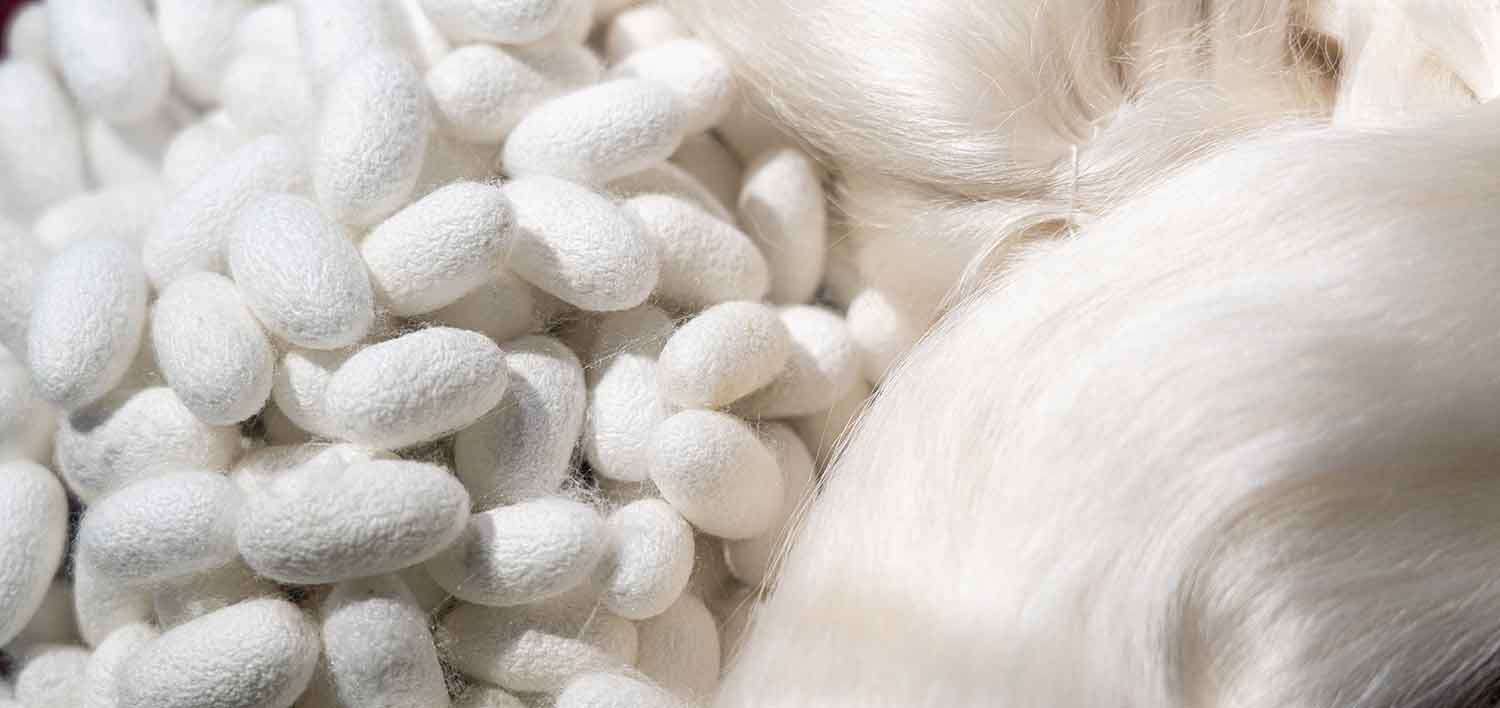Silk is an animal fiber that is extracted from the cocoon of the mulberry silkworm. The cocoon of this worm consists of one single thread which can be up to 3km long. In order to obtain this thread without any damage, the worm must be killed inside the cocoon because the thread would get damaged if the worm was to hatch. This is done by using steam or hot water.
50000 worms can produce 1000Kg of cocoons which results in 120Kg of raw silk.
The high-quality silk is called net silk / mulberry silk. The single thread of a worm would be too thin for a yarn which is why multiple threads are twisted together. This way, threads of up to 1000m are created. The inner and outer parts of the cocoon aren’t of high quality and cannot be used for net silk. For example, the ends are used to create yarn called spun silk. And again, the leftovers of that are called noil silk which is characterized by a coarse and irregular structure. However, in the clothing industry, this silk is hardly used.
Another type of silk is wild silk. This silk is produced by the Tussah moth which lives in the wild. This is why the cocoons can only be collected after the moth has hatched which means no moth is being killed. Nevertheless, the silk is not as smooth and shiny in comparison to the mulberry silk and is characterized by knots and irregularities. Besides that, this silk is difficult to colour.
Properties of mulberry silk:
- Smooth
- Shiny
- Natural fiber with highest strength
- Dries fast
- Absorbs moisture well but can stain from water or sweat
- Soft
- Very comfortable on the skin
- Cooling as well as warming
- Delicate when wet


